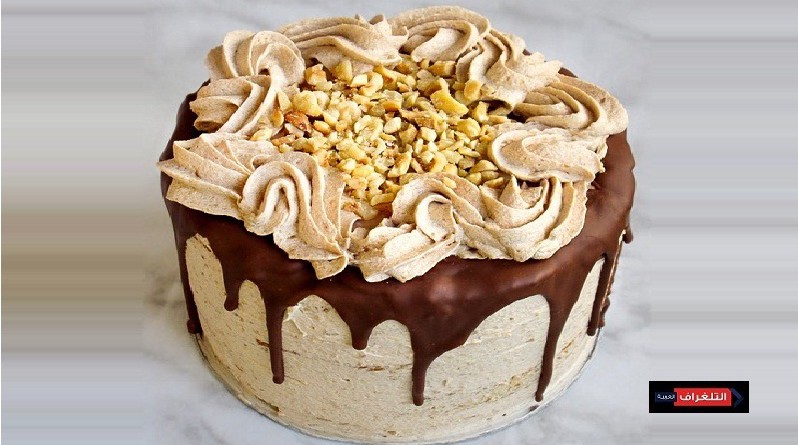HAZELNUT MOUSSE COCONUT CAKE
The timeless combination of vanilla, chocolate, and hazelnuts. Light, flavourful coconut cake, sandwiched with fragrant hazelnut mousse, then enveloped in milk chocolate. Even though the sponge is egg-free, it is still robust, with a hint of that rustic, well-loved sponge cake texture.
The mousse filling is delicate and does require finesse when assembling the cake, but you can leave it in the refrigerator to firm up, for easier decorating.
This is not a cake that would endure a long transport, unless well-chilled beforehand. Speaking of that, it is marvellous when slightly frozen, so consider placing it in the freezer 15 minutes prior to slicing and serving, for a wonderful ice-cream cake texture.
Ingredients
For the coconut cake
250 ml whole milk
200 grams vanilla yoghurt
200 ml vegetable oil
200 grams granulated sugar
1 teaspoon vanilla bean paste
200 grams plain flour
2 teaspoons baking powder
1 teaspoon baking soda
65 grams desiccated coconut
1 teaspoon vanilla bean paste
For the hazelnut mousse filling
100 grams granulated sugar
700 ml whole milk
2 egg yolks
40 grams cornflour
30 grams plain flour
50 grams soft nougat (Viennese or blød nougat)
250 grams unsalted butter, softened
150 grams finely ground roasted hazelnuts
To decorate
100 grams milk chocolate
100 grams chopped roasted hazelnuts
Preparation
To make the scrumptious hazelnut mousse filling, start by taking away roughly 200 ml of the milk, and mixing it really well with sifted cornflour, plain flour, granulated sugar, and the egg yolks in a medium bowl, and setting it aside. You do not need to be precise with the amount of milk, you just need enough to make a smooth mixture with the cornflour and the yolks. Pour the rest of the milk into a large, heavy-bottomed pot, place it over medium heat, and let it come to a boil.
Do not rush this process, or turn up the heat, because the milk can start burning, especially if the pot you are using is narrow and tall. When the milk starts bubbling up, whisk the cornflour mixture once more, then add it to the pot in a slow, steady stream, whilst whisking constantly, and cook until it thickens up, about 2-3 minutes. It will become a gorgeous, rich custard. Remove it from the heat and strain it through a mesh strainer into a large container. Immediately add the nougat and vanilla, and mix until it melts into the custard. Cover the top with cling film, and let it cool down to room temperature, so it can be whipped with the softened butter.
To make the coconut cake layers, take a large bowl, and pour in the milk, vanilla yoghurt, oil, and sugar, and whisk really well. Set the bowl aside for at least 10 minutes, so the sugar gets a chance to melt slightly into the milk mixture. Sift the flour twice with the baking powder and baking soda, then add in the coconut, and mix well. After 10 minutes, add the dry ingredients to the milk, along with the vanilla bean paste, and mix well.
Line four small round cake tins (15 cm) with baking parchment, and divide the batter evenly between them. The batter will distribute itself easily, because it is not very thick in texture. Bake them in a preheated oven, at 200°C (400°F), for 15-20 minutes, rotating the pans half-way through the baking. Check them with a toothpick around the 15-minute mark, just to make sure they do not overbake. Once done, let the baked cakes cool in their tins for about 10 minutes, then take them out, arrange them on wire racks, and let them cool completely.
When the custard has sufficiently cooled down, take a large bowl, add in the room temperature butter, and whisk with an electric whisk on high, until it becomes very light and creamy, almost resembling buttercream. Whilst the mixer is running, add in the cooled custard, a spoonful at a time, until well-blended and looking silky and smooth. Add in the finely ground hazelnuts, and blend everything once more.
To assemble the cake, level the cake layers if needed, then place the first cake layer on the serving platter, add one fourth of the filling on top, and smooth it out completely. Place the second cake layer gently on top, and continue stacking the cake until you use up all of the cake layers. Place the cake in the freezer for 10 minutes, and place the filling in the refrigerator for the same time. The filling is very soft, so it is necessary to chill the cake before frosting, to firm it up. Once chilled and firm, remove the cake from the freezer, and use the remaining fourth of the filling to frost the entire cake generously. Refrigerate the cake overnight, and keep refrigerated until serving. Yields 16 rich servings.
By Tina Vesić





